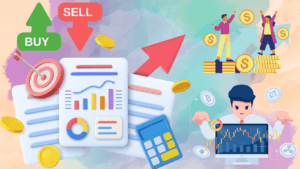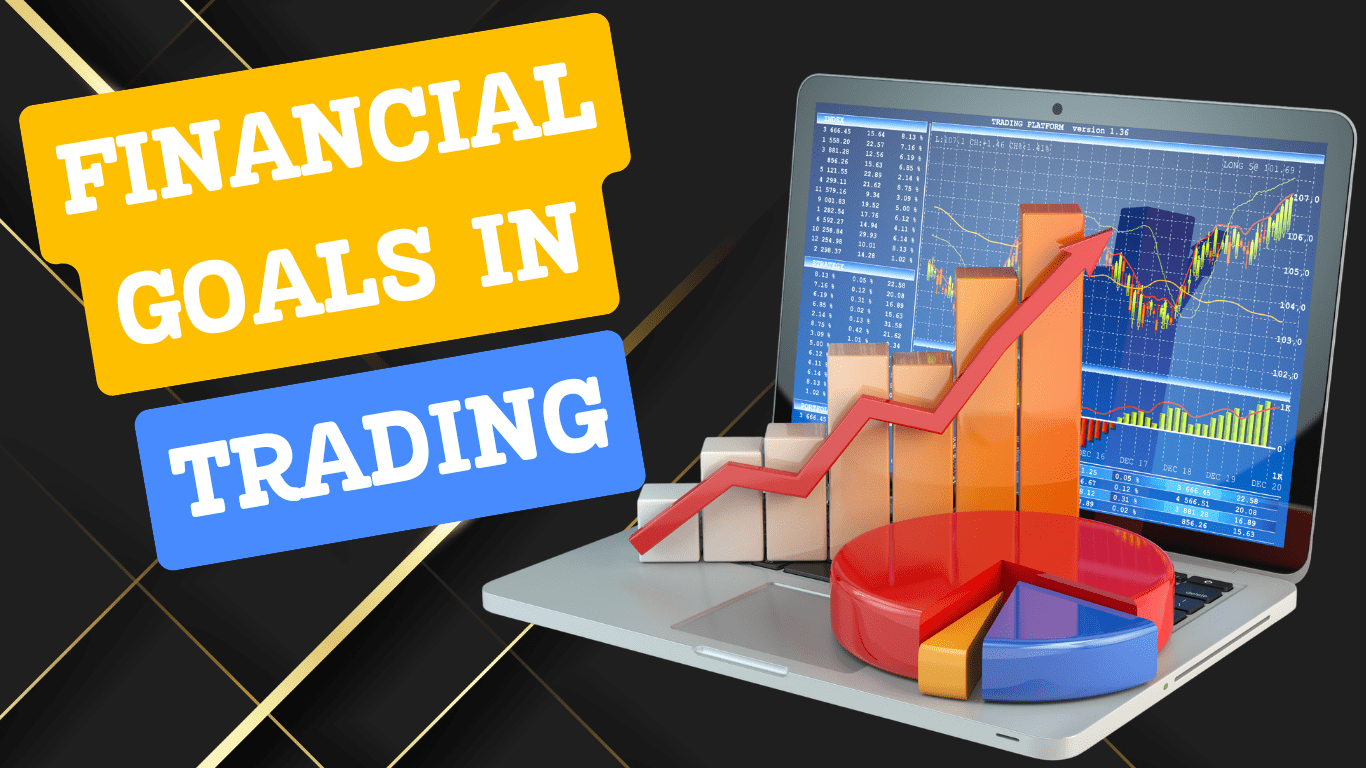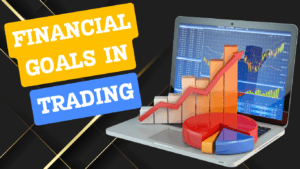Learn and Must Follow : Financial Goals in Trading
If you are still in training, and you are yet to make it this far. No matter if you’re new to trading or looking to improve on what you’ve already done, this guide will take you step by step through tricks, actionable items and areas to avoid to accomplish your trading goals.
- Through diligent planning and improvement, you can become a better trader and make the most of your Financial goals in trading.
Setting Financial Goals in Trading:
Why It Is Important?
- Well-defined financial goals in trading provide a framework for guiding your trading activities and minimizing feelings of impulse.
- Setting goals, whether it is a percentage return on the investment (ROI) or an absolute amount to profit give purpose and direction to your trades.
- Goals are also milestones against which you can monitor progress and course-correct as necessary.
Advantages of Driving with a Goal:
- Clarity: Clarity around what you are working towards makes decision making easier.
- Accountability: Goals give you a framework to assess achievement or failure.
- Discipline: Clear objectives prevent emotional urges to trade impulsively and enable you to maintain focus.

Read Top 10 Most Important Factors for Traders:
Define Specific Financial Goals in Trading That Are Realistic :
- Set goals : measurable goals, like the 10 percent return if made within six months.
- If you are aiming for a big goal, set smaller targets to be able to monitor progress and gain confidence.
Example:
- A beginner trader, Sarah decided that she would try to reach 10% of her portfolio in six months.
- By practicing diversification and stop-loss risk management, Sarah’s return goal of 6% proved to be too conservative; her final result was 11%!
Practice Risk Management in trading :
- Preserving your trading capital is the most important thing.
- Basic risk management strategies, including limiting stop-loss orders and 1-2% of your portfolio risked in any one trade, can help you remain profitable long-term.
Best Practices:
- Place stop-loss orders to limit losses.
- The maximum amount of risk per trade is 2% of your capital.
- Spread your investments among different asset classes.
Expand Your Trading Portfolio :
- Invest in different types of investment products, such as stocks, bonds, commodities or currencies. This minimizes the effect of under performance in any one area and ensures overall capital preservation in the portfolio.
Example:
- A portfolio that was diversified across at least some tech stocks with government bonds and commodities managed to balance off the declines in stock prices with gains in that commodity market.

Stick to a Consistent Trading Plan :
- A trading plan means knowing your entry and exit points, acceptance of the risk, and targeted profits.
- By having a consistent plan, you will not fall out of your chair and cause an emotional and impulsive trade.
Actionable Tip:
- Outline your trading strategy with goals, rules for risk management, analysis methods, etc.
- Stay the course on this if market upswings and downturns threaten to knock you off your plan.
Use Technical and Fundamental Analysis for trading :
- Make data-driven trading decisions by integrating both technical and fundamental analysis.
- Technical analysis looks at charts and trends to help you time your trades, while fundamental analysis assesses the financial health and future prospects of assets.
Example:
- Some intra-day traders would use moving averages and news in the market to look for the best entry and exit points to enter and exit the market while avoiding volatile areas.
Avoid Over-trading : Just follow Trend Following
- In many cases, it is emotional decisions, greed or impatience that give rise to over-trading.
- It increases the risk and transaction costs and thus, diminishes the profits.
Pitfall Example:
- Alex, who trades stocks on a day-to-day basis, made 20 trades in a day when his blueprint called for five.
- This led to large fees and fatigue-driven poor decision making.

Track and assess your performance :
- By examining your trading performance, you can identify your advantages and disadvantages.
- To this end, do a review of previous trades and their results and adjust your plans.
Trick:
- To record your transactions, their results, and your ideas, keep an account and maintain a trading journal.
Commit to Continuous Learning :
- The financial markets are a dynamic and ever-changing space. Keep on top of new approaches, emerging software tools, and market dynamics.
- Use resources like books, online courses, and webinars to deepen your knowledge.
Example:
- A new strategy from an experienced trader based on it’s proven success in back-testing yields improved performance.
Common Pitfalls to Avoid :
Mistakes that can materially affect their financial goals in trading even for a seasoned trader. Avoid some of the common pitfalls:
- Over-trading : Too many transactions driving up risk, costs, and killing profits.
- Neglecting Risk Management : Simply skipping, stop-loss orders or putting all your capital at the risk of a single trade can cause you to lose your profits fast.
- Trading Based on Emotions : Emotion such as fear, greed, and impatience can cause you to make bad decisions.
- Failing to Diversify : A market dip will leave you vulnerable if you are over-invested in one asset class.
- FOMO : Caught up in doing trades just because of hype or fear of losing out on something.
- Trading on Margin Without Understanding Risks : Margin Trading Without a Clear Understanding of the Risks, Calm Market conditions can lead to increased profits, but such heightened risks can cause amplified losses.
Case Study – Failure Example:
- Without fully grasping the risks involved, Alex traded on margin.
- His leveraged position took large losses as the market moved against him, and wiped out his entire account value.
Drive Your Trading with a Financial Action Plan :
Set Clear Goals:
- Set measurable, time-bound financial goals in trading (for example, “5% ROI by end of the month”).
Create a Trading Plan:
- Learn about risk management procedures, entry/exit points, and analytical techniques.
Pick Up Risk Management Procedure:
- Never risk more than 2% of your capital on a single trade and always place stop-loss orders.
Monitor and Adjust:
- Review your performance on a regular basis, tweak your strategy as needed, and adjust to changing market conditions.
Stay Disciplined:
- Follow your trading plan, and steer clear of making impulsive and emotional choices.
Keep Learning:
- To stay competitive in markets, create and update education on a regular basis.

Best Practices in Managing Risk : Read all Steps
- But sound risk management is really the bedrock for successful trading. Here are some essential tips:
Establish Stop-Loss Orders:
- Always set parameters to limit your losses on each trade.
Diversify:
- Diverse Portfolio: When you invest in cryptocurrency, do not put all your funds into a single project.
Risk What You Can Afford:
- Note: Do not risk more capital than you are willing to lose.
Stay Consistent:
- To remain agile to the changing market environment
Avoid Margin If Unfamiliar:
- Gain a full understanding of margin trading before you try it.
Closing Thoughts :
- Trading isn’t a get-rich-quick scheme, it’s a skill that demands discipline, strategy, and continuous improvement.
- By setting achievable goals, plotting a data-driven course, and committing to the process of risk management the financial markets can be a path to achieving your career and financial goals in trading.
Start Small, Aim Big:
- For those of you who are new to trading, look for smaller wins. Just having confidence, learn something from every trade, and in time you will gain the necessary experience for bigger success.
- They do not have to be complex. Your financial goals in trading can be achieved. Good luck, trade smart, stay disciplined and see your hard work turn into real growth.
- So what do you think? Are you ready to trade? Small goals, big goals, trade smart, follow your goals, and make it remain.

Frequent Asked Questions : Financial Goals in Trading
Trading is a quick way to make money?
Answer :
- Success in the financial markets is not possible with just capital, it needs discipline, strategy, and the formulation of the plan.
Can I trade if I don’t have any sort of prior experience?
Answer :
- It is suggested to start with a basic understanding of trading. Learn the basics and expand your knowledge by practicing and using learning tools.
Why is risk management so important in trading?
Answer :
- Risk management is a critical component of trading as it helps safeguard capital and limit potential losses.
- It includes using stop-loss orders, diversifying your portfolio, and not risking more than you can afford to lose.
Is Margin trading good for beginners?
Answer :
- If you are not familiar with margin trading, it might be best for you to steer clear of it.
- Margin trading means taking out money to trade bigger volumes and increase profits, but also losses. Before using it, you should understand very well how it does.
How can I find a good trading strategy?
Answer :
- It includes analyzing market trends, determining entry and exit points, and practicing your strategy with mini trades before going big.
What are some mistakes that most people make in trading?
Answer :
- This guide is focused on keeping your discipline and following your plan.
- Reading Feel free to refer and reread the Lesson as often as possible. As always, knowledge is your best friend when it comes to investing.








